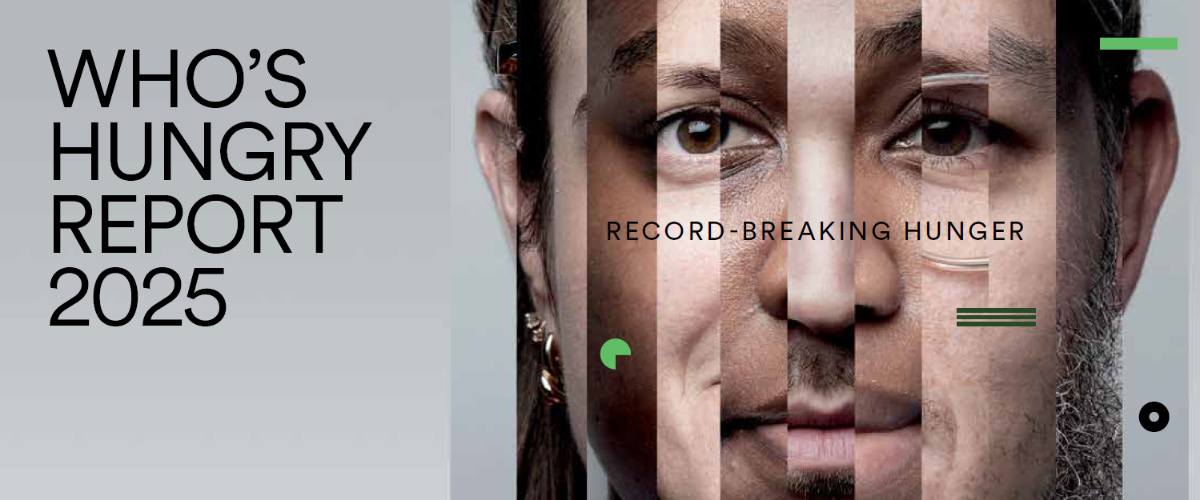
Today, Daily Bread Food Bank in partnership with North York Harvest Food Bank released the 2025 edition of the Who’s Hungry report— our flagship report on food insecurity and poverty in Toronto.
The findings are stark: food bank visits have reached unprecedented levels, and the crisis is deepening.
Nearly a year after the City of Toronto declared a food insecurity state of emergency, food bank visits have hit a new high: over 4.1 million food bank visits in the past year. That means more than 1 in 10 Torontonians continue to rely on food banks to feed themselves and their families.
Beyond the rising numbers, the hunger crisis has deepened. In 2021, most of the growth in visits came from people using food banks for the first time. By 2025, that picture has shifted — the majority of visits (59%) now come from returning clients, up sharply from 47% just a year earlier. More than half (54%) of clients now visit three or more times per month — a clear sign that what began as a temporary emergency has become a long-term reality.
The story behind the numbers:
Saad first began visiting the food bank in 2008. Despite holding a professional degree in food science and senior positions in Baghdad, his path to stable employment in Canada has been filled with challenges.
“I worked in many companies before joining the cheese plant in Mississauga almost six years ago. Sometimes I work full-time, sometimes part-time. The wage is close to minimum wage. When the business is slow, they lay us off. I go on EI these months. I want to do a course in a trade, … or apply [to be] a TTC driver or a technician in a hospital. But I can’t do any of this right now, it needs money, and I work on shifts.”
Like Saad, many of our neighbours are doing everything “right” to feed their families and keep a roof over their heads — working hard, getting an education, striving to build a better life — yet they are still forced to rely on food banks just to make ends meet. This is because food insecurity isn’t just about access to food—it’s about the systemic issues that drive people into poverty, such as unstable, low-paying jobs, a lack of affordable housing, and inadequate income supports.
Nearly half (46%) of survey respondents reported at least one member of their household was employed, and over a third (35%) held multiple jobs. Despite working a median of 35 hours per week, 72% said they would take on more hours if they could.
Education isn’t a safeguard either — more than half (57%) of food bank clients hold a post-secondary degree or higher.
As the cost of living continues to rise faster than incomes, respondents reported being left with a median of just $8.83 a day after paying for housing costs. The vast majority (88%) also live in unaffordable housing and more than one in five (22%) spend their entire income on housing.
Poverty and food insecurity are not personal failures — they are policy failures. But there is hope!
Who’s Hungry 2025 calls on all levels of government to take bold, coordinated action to tackle the root causes of poverty and food insecurity so that everyone can live with dignity. The solutions are within reach — what’s needed now is the will to act.
Here’s how you can help fight hunger:
Your voice matters! Together, we can move beyond temporary fixes and create a city where no one has to choose between paying the rent and putting food on the table.